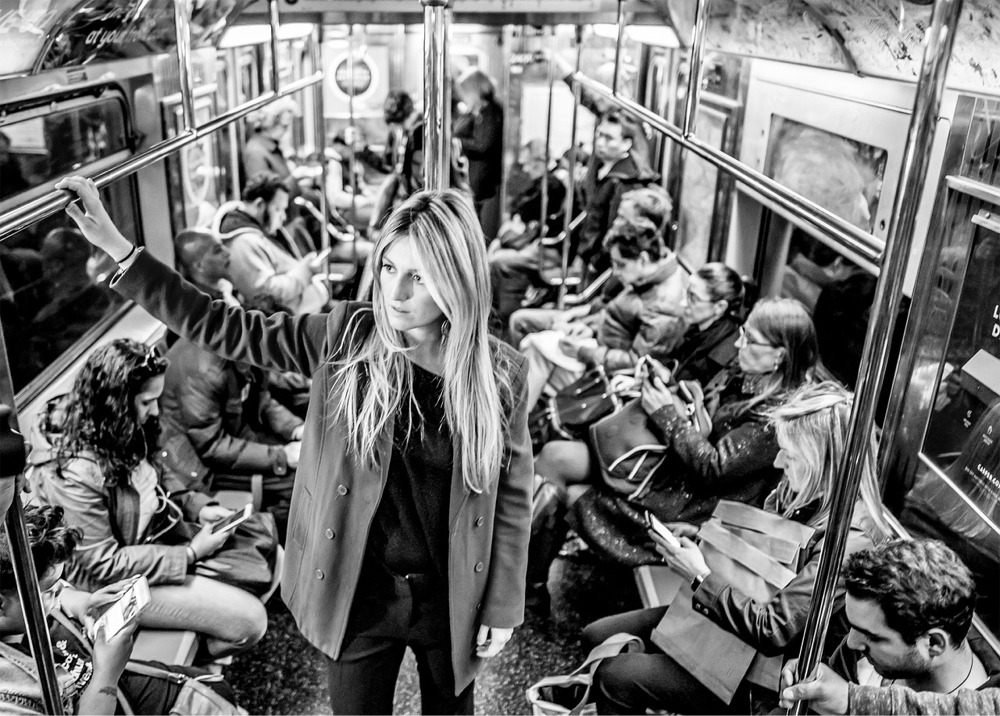New York City Subway
Home > New York State Photographs > New York > New York City Subway

The photo was incredibly vivid. It was as if a moment of everyday life had been frozen in place and willed to last forever. The subway car was reasonably full, with most seats taken. The light from the overhead fixtures shone down on the passengers, highlighting the stark contrast between the black and white tones.
At the forefront of the picture was the attractive woman standing in the aisle, her gaze seemingly fixed on some distant point. She alone seemed to be oblivious to the scene playing out around her. Her face was inscrutable, and yet the way she stood spoke of a certain readiness for whatever might come.
The street photographer was captivated by the beauty of this scene of everyday New York life. He also felt strangely drawn to this woman, as if he already knew her from some distant past.
New York City Subway
The New York City Subway is one of the largest and most iconic public transportation systems in the world. It plays a crucial role in the daily lives of millions of New Yorkers and visitors to the city. Here are key aspects of the New York City Subway:
History
- The New York City Subway system opened on October 27, 1904, making it one of the oldest rapid transit systems in the world.
- It began with the Interborough Rapid Transit Company (IRT) operating the first line from City Hall in Manhattan to 145th Street in Harlem.
System Overview
- The subway system consists of a network of interconnected lines, with numbered and lettered routes.
- There are two main divisions: the A Division (numbered lines) and the B Division (lettered lines).
- The system serves four of the five boroughs of New York City: Manhattan, Brooklyn, Queens, and the Bronx.
Lines and Routes
- The subway has over 25 lines, each designated by a letter or number. Examples include the A, 1, 4, and L trains.
- Lines are identified by color on subway maps for easier navigation.
- Express and local services are common, with express trains making fewer stops between major stations.
Stations
- The subway has hundreds of stations, ranging from large transit hubs to smaller local stops.
- Stations are equipped with turnstiles for fare payment, platforms for boarding trains, and various amenities such as maps, information booths, and vending machines.
Fare System
- Passengers pay for subway rides using a fare card called the MetroCard.
- The system offers various fare options, including single rides, unlimited ride cards for a specific duration, and discounted fares for seniors and students.
Expansion and Upgrades
- The subway system has undergone numerous expansions and renovations over the years to accommodate the city's growing population and changing transportation needs.
- Ongoing projects include station renovations, new line construction, and the implementation of modern signaling systems.
Challenges and Maintenance
- The subway faces challenges such as aging infrastructure, delays, and occasional service disruptions.
- Maintenance and improvement projects are regularly undertaken to address these issues and enhance the overall efficiency of the system.
24/7 Operation
- The New York City Subway operates 24 hours a day, seven days a week, providing a vital means of transportation for people working various shifts and those who rely on public transit at all hours.
The New York City Subway is a defining feature of the city's landscape, representing a critical component of its infrastructure and a symbol of urban life. It continues to evolve to meet the needs of its vast and diverse ridership.


